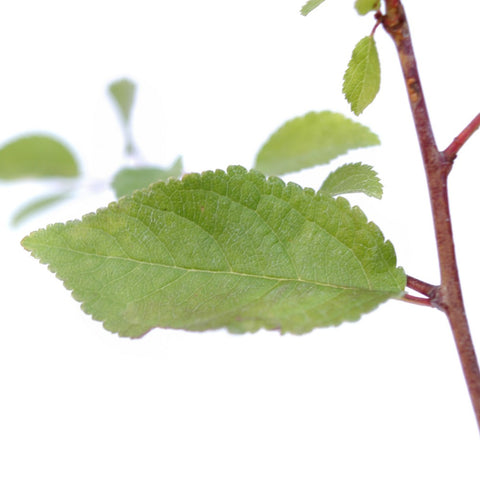Blackthorn Tree Facts and Information
Blackthorn Trees Facts and Information
- Latin name: Prunus spinosa
- Native words: Old Irish (draighean) Scots Gaelic () Old English (slahthorn) Welsh (draenen du) eastern Celtic ()
- Ogham sign: St (z)
- Height when mature: 6m
- Height after 10 years:

Blackthorn Botanical Description:
The Blackthorn Tree is the first of the year to come into bloom. In February or March depending on the winter, creamy white flowers appear on hedgerows long before any other, and before the leaves. They offset the dark brown winter twigs, well. In warm spring, the leaves will be open by the end of March and are small, toothed and oval in shape. Blackthorn develops very sharp spines which cover the branches, intended to defend it from grazing animals.
The bitter fruits of the blackthorn tree are known as sloes. They are ready to pick in October and are often covered in a white powdery bloom, which is a yeast fungus. They are green when unripe and black when ripe.
Blackthorn suckers strongly from the main tree and large stands develop forming a dense thicket. Blackthorn is botanically a small plum tree.
Natural History and Ancient Wisdom of Blackthorn Trees:
Originally called ‘sloh’ by the early English, Blackthorn has fruit known as sloes that are best known for flavouring sloe gin, although drinks made of fermented sloes have been concocted for centuries. The presence of place names associated with the berries, and that the tree was originally named after its berries suggests that they were very important to some communities.
In Ireland, blackthorns were believed to provide protection against ghosts. There were strong beliefs against cutting it on 11th of May or 11th of November.
The hardwood with polished bark are sold for walking sticks or was once used for the teeth of hay rakes.

Blackthorn Place Names:
- Slaughterford (Wiltshire) - ‘ford by the sloes’
- Slaugham (Sussex) - ‘hamlet where sloes grew’
Wildlife Rating of Blackthorn Trees:
Good.
The thick spiny thicket provides a safe nesting site for birds, many of which later feed on the sloes. Singing male Lesser Whitethroats will call from a perch atop Blackthorn before breeding in them.
Brown Hairstreak butterfly caterpillars feed on the new shoots.
The fruit is taken by birds which drop the seed which lies dormant for 18 months before shooting.
Good Points of Blackthorn Trees:
- Good for making a hedge to keep cats and other unwanted intruders out; no one gets past it spines!
- Not growing more than 6m it is suitable for garden hedges.
- The white flowers in spring are very attractive.
Bad Points of Blackthorn Trees:
- Does not tolerate heavy shade.
- Needs a very well draining planting location.
- The sharp spines on the tree can cause painful wounds. Shoots may appear from the ground near the tree from suckers.
Buy a Blackthorn tree
We have been lovingly supplying trees as gifts for over 15 years. Here at Tree2mydoor we offer an award winning gift service and deliver meaningfully gift wrapped trees around the UK and Ireland.
Send our Blackthorn Tree Gift or Sloe Bush Gift to friends and family. A popular gift to send to someone who loves a tasty tipple of sloe gin. The delicious berries will bring life to their gin and the gorgeous white blossom in the spring will life to their garden! Send one today as a unique, birthday gift that grows.
Looking for green gift incentives? We can supply large quantities of tree saplings for our corporate customers. Just drop us an email at care@tree2mydoor.com with the details of your project and we will get back to you with an eco-friendly gift proposal.